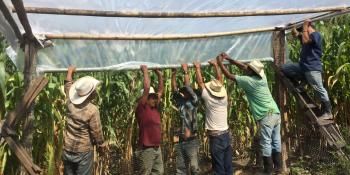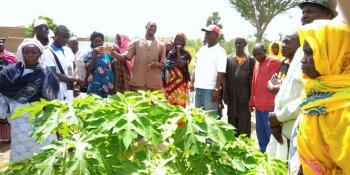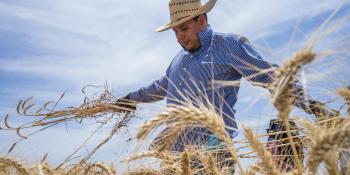Climate variability aggravates pest and disease problems in cassava in Southeast Asia

Pests and diseases continue to threaten the sustainable production of cassava in Southeast Asia, and extreme changes in the climate set a favorable condition for them to thrive and spread more aggressively.
A new study by the International Center for Tropical Agriculture (CIAT), conducted in 430 project sites across the region, assessed the kinds of diseases and extent of disease spread in the areas studied. Disease symptoms of the Cassava Witches’ Broom and the cassava pest mealybug have infested at least 67% and 70% of fields, respectively, the authors note.
A number of pests and diseases have been plaguing the cassava industry in the Philippines, Vietnam, Cambodia, Laos and Thailand. Serious attention needs to be focused particularly on Cassava Witches’ Broom disease in Cambodia and the cassava mealybug pest in Indonesia, where hundreds of hectares of cassava crops have been devastated, affecting millions of farmers in the region.
Dr. Ignazio Graziosi, a CIAT Research Fellow specializing in Invasive Species Ecology, said: “What we’re seeing is that increased climate variability, intensification of cropping systems, and poor crop management practices are aggravating pest activity and disease outbreaks, as well as the crop’s ability to withstand new, emerging threats.”
“Increased climate variability, intensification of cropping systems, and poor crop management practices are aggravating pest activity and disease outbreaks, as well as the crop’s ability to withstand new, emerging threats,” he added.
Cassava is an important base ingredient for a wide range of food and non-food industries. Ironically branded as a poor man’s crop, cassava is one of the leading export crops of most countries in Southeast Asia, contributing multi-billion dollar revenue to the region.
In light of these mounting problems, the study presents measures to control disease spread to ensure food security, farmer welfare and the long-term sustainability of the industry.
Comprehensive pest management, including the use of biological control options, would effectively contain the outbreaks. Measures outlined in the study to combat pests and diseases include using natural enemies or predatory insects that prey on the pests in a way that is also environmentally safe.
The article titled Climate-triggered pest and disease invaders threaten US$5 billion cassava industry in Asia explains more about the current scenario of the cassava industry and the options presented in the study.
Link to the study: Emerging pests and diseases of Southeast Asian cassava: a comprehensive evaluation of geographic priorities, management options and research needs
Related stories
- CIAT blog: Cassava mealybug awareness campaign launched in Vietnam
- CIAT blog: World Environment Day: Fighting Asia’s alien invasion
Bernadette Joven is the Communcations specialist for CCAFS Southeast Asia.



